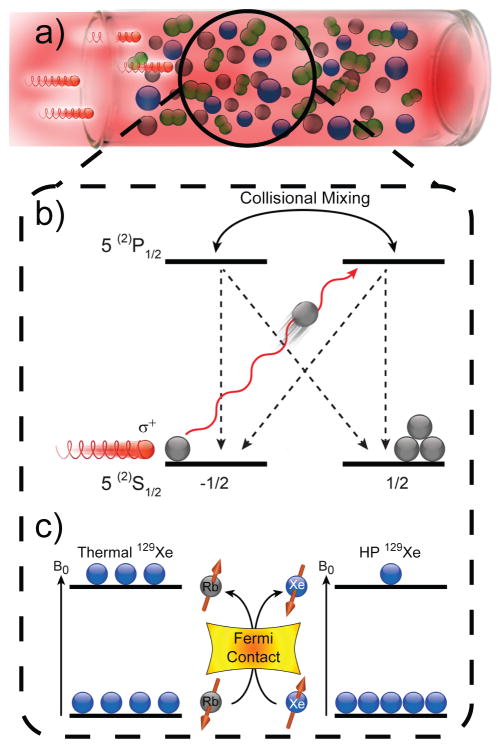Figure 2.
Spin-Exchange Optical Pumping.[9] (a) SEOP requires an optical cell containing a noble gas, buffer gases (e.g. N2, as shown), and a small quantity of vaporized alkali metal (typically Rb or Cs[47]), irradiated by laser light resonant with an absorption line of the alkali metal (e.g. 794.8 nm for Rb D1 transition). Collisions with N2 non-radiatively quench excited Rb states, effectively suppressing deleterious Rb fluorescence that can depolarize other Rb spins.[48] The first step of SEOP involves the absorption of photons of the same circular polarization, which conserves angular momentum by selectively depleting population from one of two Rb ground electronic (mJ=±1/2) states (neglecting Rb nuclear spin for simplicity). Collisions with other gas-phase species tend to equalize the excited-state populations and the ground states are repopulated at effectively equal rates. However, since only one ground state is depleted by the laser, ground-state population accumulates on the other mJ state, leaving the Rb electronically spin-polarized; a weak magnetic field along the direction of laser propagation (not shown) helps to maintain the electron spin polarization. Gas-phase collisions also allow spin exchange (c) between the polarized Rb electron spins and the noble gas nuclear spins, a process mediated by Fermi-contact hyperfine interactions. Constant laser illumination of the Rb vapor therefore allows the nuclear spin polarization to accumulate over time, thereby generating the hyperpolarized noble gas.

